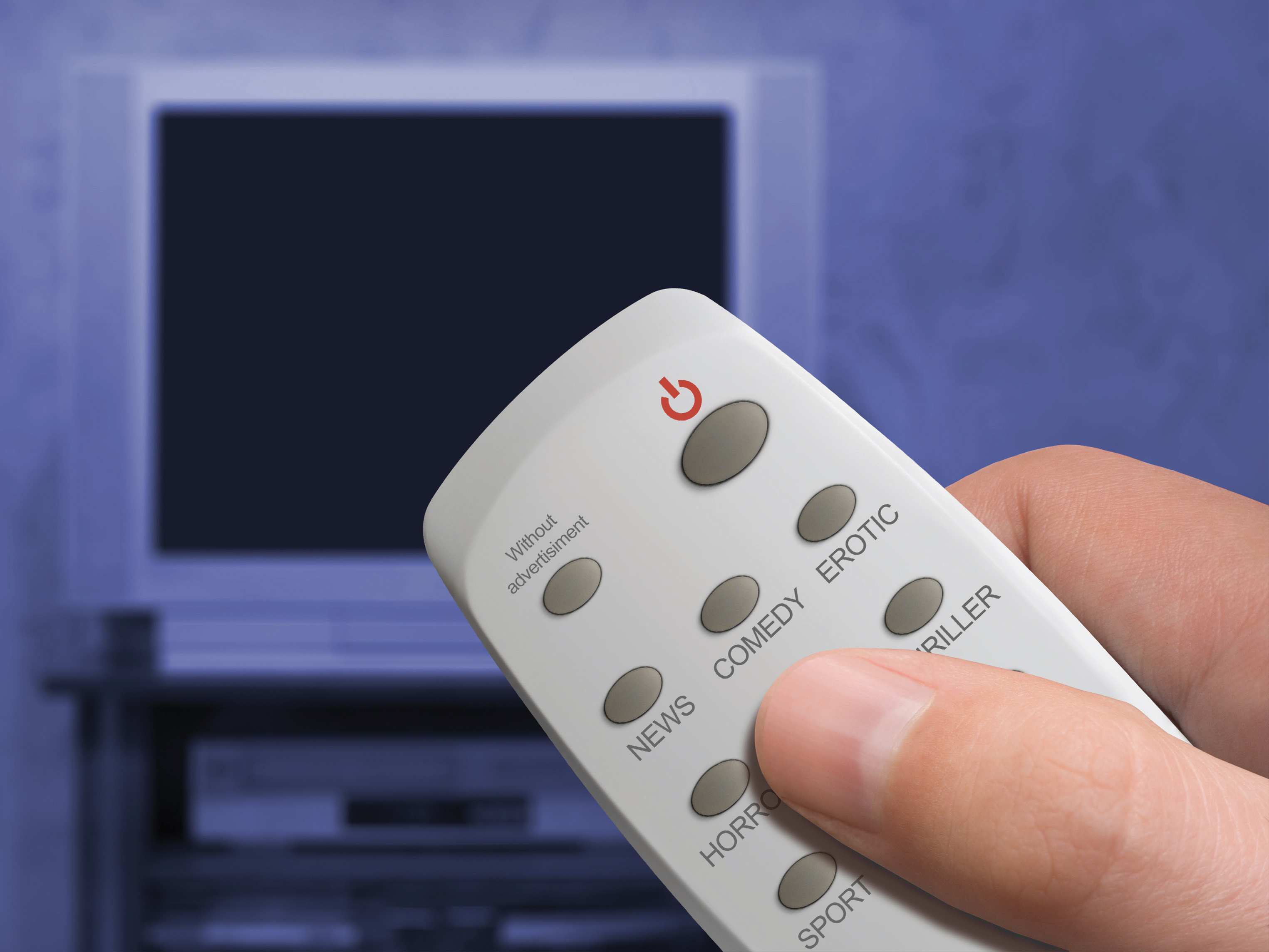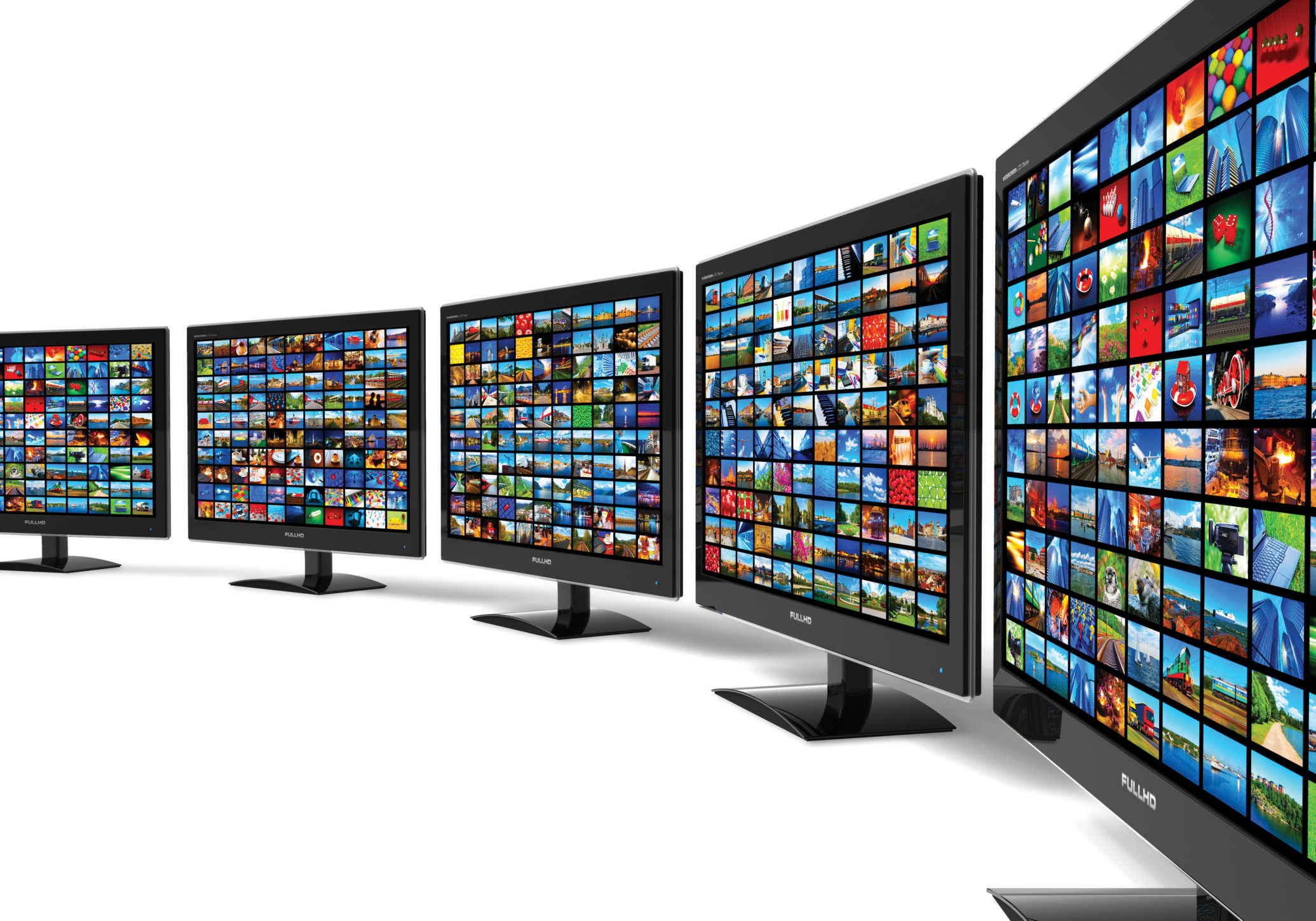Visual Mass Media
Humans like to both watch and listen to something at the same time. For at least 140,000 years, humans have been entertained and informed by watching and listening to the things going on around them. But whether it was watching other humans or listening to the sounds of the forest, it had to happen in the moment, as there was no artificial way to convey images or sounds. It wasn’t until about 40,000 years ago that we know our ancestors first began to explore visual media including drawings, paintings, and sculptures. We later know that performing arts became a popular visual medium in societies like ancient Greece, for example, where plays were an important but still relatively new and controversial form of entertainment. Plato’s early critiques of theater mirror those that have been targeted toward television and movies more recently.
Plato decried the fact that playwrights seemed to focus their plots on the most unpleasant and unrefined aspects of society, such as lust, greed, and violence. What Plato may not have realized was that the Greek playwrights were continuing a theme that started with the earliest producers of visual media. The drawings, paintings, sculptures, and plays produced until that point shared some human themes—namely, sex, food, drink, wealth, and violence. I’m sure Plato would not be pleased to learn that these themes continue today in more modern forms of visual media like television and movies. Although we can see that visual media have long been a part of human history, they didn’t constitute a mass medium until the late 1800s and early 1900s with the advent of motion pictures and television.
Technology Leading to Visual Mass Media
As with the birth of any mass medium, technological advances had to take place to move us from interpersonal or group engagement with visual media to mass engagement. In the 1830s, the technologies needed to create photographs were put together in Europe, and photos were in regular circulation by the 1840s. By the late 1800s, photographs could be mass-produced and included in existing print-based mass media like books, newspapers, and magazines. As soon as photographic technology began to circulate, people began to experiment with its limits to see what other potential it held. In the late 1870s, experiments with serial photography were under way, which was the precursor to motion pictures. In the 1890s, Thomas Edison commercialized film, creating a motion picture company and demonstrating the new technology at expos and fairs and inviting guests to come watch short movies of people doing mundane things—for a fee, of course. At the same time, advances in sound recording and wireless transmission of sound were occurring, which was essential to bring together the audio and visual elements of modern movies and television.
Movies became the first mass medium to combine audio and visual electronic communication. Movie technology developed more quickly than television because it didn’t have to overcome challenges presented by electromagnetic transmission and reception.
As was the case with radio, several people were simultaneously working to expand the technology that would soon be known as television. The earliest television was mechanical, meaning that it had to be turned or moved rather than relying on electronics. In 1884, Paul Nipkow invented a mechanical television-like device that could project a visual image of the then famous Felix the Cat. It took a while for this crude version of a television to be turned into a more functional electronic version. In 1923, Vladimir Zworykin improved on this technology, followed closely by John Baird and Philo Farnsworth. Collectively, these men are responsible for the invention of
television, which was the first mass medium capable of instantly and wirelessly transmitting audio and visual signals.
Timeline of Developments in Television Technology
- Late 1800s. The cathode ray tube is invented, which serves as the basic picture tube for later televisions. Paul Nipkow invents a scanning disk that separates a picture into small pinpoints of light that can be transmitted line by line and decoded to recreate a rough (low-resolution by the standards of early television) image.
- 1923. Vladimir Zworykin develops the iconoscope, the first television camera tube capable of converting light rays into electrical signals. At the same time, Philo Farnsworth patents an electronic image dissector tube and John Baird improves on Nipkow’s disk. Baird, working in Great Britain, transmits the first live moving pictures in 1926, and Farnsworth, working in the United States, transmits a picture (of a dollar sign) in 1927.
- 1935–39. Public demonstrations of television capture the attention of people around the world, culminating in the famous demonstration of television by RCA at the 1939 World’s Fair.
- 1940. The Federal Communications Commission (FCC) adopts standards for television transmissions that help commercialize and turn television into a mass medium.
- 1940s–70s. Television is in its “golden age,” dominating the visual medium market.
- Late 1970s–80s. Satellite and cable providers challenge network television’s dominance.
Television’s Golden Age
Television’s initial success as a mass medium came largely from formats and programming strategies already tested and used by radio stations. From the perspective of successful radio stations, television stole the best ideas from radio, including prime-time programming and show ideas and even the stars of the shows. For example, the radio show Candid Microphone became the television show Candid Camera, and radio stars like George Burns became even larger television stars. Television also secured advertising and sponsorship from many of the same sources as radio, which started a fierce competition between radio and television.
Television’s rising popularity and its effect on other forms of entertainment are documented in many ways. For example, in the late 1940s and early 1950s, cities with television stations saw a drop in nightclub attendance, radio listening, and library book circulation, as well as a 20 to 40 percent drop in movie ticket sales. By 1951, television’s status as the most important mass media of the time was cemented, as sales of television sets surpassed radios for the first time. From the mid-1950s until the cable and satellite boom of the 1980s, broadcast television was in its “golden age.” Television was made more prominent with the advent of color broadcasting, which by 1966 was standard for the prime-time lineup at the three major networks (NBC, CBS, and ABC). The rush to include color programming is just one of many examples of the intense competition among the three major networks.
During the golden age of television, the major networks aired very similar types of programs, all aimed at gaining higher ratings and audience shares than the others. Programming was primarily divided into two main categories: information and entertainment. In terms of information, the three big networks viewed their nightly news programs as flagships that helped establish their credibility as a network and helped attract a loyal viewer base. Even today, the networks’ news programs are among some of the highest-rated programs on network television. In addition, to meet the requirement by the FCC that stations serve the public interest and offer more informational programs, the networks offered newsmagazines as a more dramatized source of news. These programs, including Nightline,Dateline, 60 Minutes, and 20/20, are still important features of the network lineup that draw in large audiences.
Since the major networks broadcast to the whole country and the three options (NBC, CBS, and ABC) needed programming that appealed to mass audiences, television producers and executives were sometimes reluctant to stray from proven models of success. The typical lineup of sitcoms, hour-long dramas, news programs, sketch comedy and variety shows, and soap operas persisted from the 1950s until the 1980s. During this thirty-year period, the three main networks accounted for 95 percent of prime-time viewership, which meant that almost everyone in the country watching television was watching one of these three networks. The days of only having three options was about to change, however, and network television saw its influence decline starting in the 1980s. The introduction of FOX as a fourth network signaled a programming change as the new network tried to appeal to a more specific audience with some of its shows. Adult-oriented prime-time cartoons like The Simpsons and more diverse sketch comedy shows like In Living Color shook up the rather predictable lineup of the other three networks. The networks soon had more than three channels to compete with, however, as cable and satellite became more accessible and affordable and offered many more programming options.
Cable and Satellite Television
Network and broadcast television was forever changed by the growth of cable and satellite technology. Although the mass medium is still the same (moving images sent from one place to many television sets), the increased competition led to further development and changes to how we, as users, interact with and experience the medium. Until the early 1970s, the major networks had lobbied the FCC to control and regulate cable television to reduce the potential for competition. Although cable television technology had been around for thirty years, it wasn’t until the FCC changed policies in 1972 that cable got the green light to compete directly with the networks. Time, Inc. (which is still a part of Time-Warner Cable) launched a satellite to relay its HBO signal in 1975, and cable magnate Ted Turner launched a satellite for his WTBS station (still on cable as TBS) in 1976. Turner’s Cable News Network (CNN) also competed with the networks’ monopoly on televised news coverage. Cable television then grew steadily and quickly for the next several years, and many more channels were quickly introduced. Cable was especially attractive to people who lived in mountainous, hilly, or rural areas that had difficulty receiving the broadcast channels’ signals. Many people were also happy to give up ugly rooftop antennae that required readjustment for each channel change or to compensate for other signal interference. The price for the access and convenience, however, was a monthly cable charge, which was a big change from the public and free broadcast channels. As cable’s subscriber base and channel options grew, different pricing options helped make cable an “easier sell” to potential customers. Additionally, cable companies and satellite television providers compete fiercely with each other, which helps reduce cost. In 2012, 90 percent of US households with televisions subscribed to cable, satellite, or fiber-optic television. Although this number makes it clear that the days of broadcast networks entering viewers’ homes free over the airwaves are over, there is a growing trend of people who are turning back to the free airwaves as a primary source of television. The “Getting Plugged In” box discusses this new phenomenon of “cord cutters” and broadcast television’s growing popularity over cable among a new generation of television viewers.
“Getting Plugged In”
Cord Cutters and the New Challenge to Cable Television
For the past few years, cable companies have grown increasingly nervous about a new trend in television-viewing habits. The practice of cord cutting refers to people who cancel their cable television packages and rely on broadband Internet service and traditional broadcast television signals to watch the programming they used to receive through monthly cable subscriptions. Although the number of television households in the cord-cutter category increased by approximately one million in 2011, they still only account for about 5 percent of total television households.
Age as a demographic category is key to understanding this phenomenon. There is a generation of television viewers that grew up on free broadcast television, didn’t get cable or satellite when they became popular in the 1980s and 1990s, and still doesn’t pay for television and never will. Market analysts note that this segment of the market is elderly and will not be around for much longer. Many baby boomers who saw the advent of cable and satellite and have long enjoyed the diverse programming their subscriptions offer view their monthly bills as a standard utility and will likely continue subscribing until they die. Generation Xers, who are currently in their thirties and forties, are caught in the middle. Many of these people are technologically savvy and know how to access (and occasionally do access) online television and movies. Many of them may also find their monthly cable or satellite bills annoying but acceptable. This group of people will likely keep their subscriptions as well, out of convenience, but could be tempted to cut the cord if they hit a financial hardship and/or the process of going to an online-only viewing model became easier. Last, we have a generation of people who are in college or are recent graduates who happen to be coming of age during a harsh economic crisis. They have also spent much of their lives watching online videos, television shows, and movies. The thought of committing to a monthly cable or satellite bill that would likely run them upwards of $100 a month when money is tight and they know how to access their entertainment elsewhere doesn’t sound like a winning proposition. In a time when we can get unlimited streaming on Netflix and Hulu Plus for about $8 a month each, a la carte access to programs through iTunes or Amazon Streaming, or illegal downloads of shows through torrent services, cable and satellite have to face challenges that many of us couldn’t have imagined just ten years ago. Even though 98 percent of television viewing still occurs through traditional means (cable, satellite, broadcast, or telephone company), 9 percent of US Americans have cut the cord to rely only on online viewing content, and an additional 11 percent are considering doing the same, which points to the fact that this practice is only going to increase over the coming years. Luckily for the cable and satellite companies, many subscribers don’t cut their services completely, since they may also rely on the company to provide the Internet access they need to switch to online-only viewing.
- How do you access your television shows and movies? What is your preferred way? How do you think your age group/generation feels about monthly cable/satellite subscriptions?
- Do you think cable and satellite companies have a future in providing television programming? Why or why not? As we have learned in this chapter already, many forms of media have to adapt as technologies change and competition increases. How might cable and satellite adapt to these changing forces?
The Internet and Digital Media
The “
Internet and digital media age” began in 1990 and continues today. Whereas media used to be defined by their delivery systems,
digital media are all similarly constructed with digital, binary code made up of ones and zeros. Instead of paper being the medium for books, radio waves being the medium for sound broadcasting, and cables being the medium for cable television, a person can now read a book, listen to the radio, and access many cable television shows on the Internet. In short, digital media read, write, and store data (text, images, sound, and video) using numerical code, which revolutionized media more quickly than ever before.
Just as technological advances made radio and television possible, the Internet would not have been possible without some key breakthroughs. The
Internet is a decentralized communications and information network that relies on the transmission of digital signals through cables, phone lines, and satellites, which are then relayed through network servers, modems, and computer processors. The development of digital code was the first innovation that made way for the Internet and all digital media. Surprisingly, this innovation occurred in the 1940s, leading to the development of the first computers. Second, in 1971, microprocessors capable of reading and storing electronic signals helped make the room-sized computers of the past much smaller and more affordable for individuals. Last, the development of fiber-optic cables in the mid-1980s allowed for the transmission of large amounts of information, including video and sound, using lasers to create pulses of light. These cables began to replace the copper cables used by telephone, television, cable, and satellite companies. Because of these advances, information now travels all around us in the form of light pulses representing digits (digital code) instead of the old electrical pulses.
The birth of the Internet can be traced back to when government scientists were tasked with creating a means of sharing information over a network that could not be interrupted, accidentally or intentionally. More than thirty years ago, those government scientists created an Internet that was much different from what we think of as the Internet today. The original Internet was used as a means of sharing information among researchers, educators, and government officials. That remained its main purpose until the Cold War began to fade and the closely guarded information network was opened up to others. At this time, only a small group of computer enthusiasts and amateur hackers made use of the Internet, because it was still not accessible to most people. Some more technological advances had to occur for the Internet to become the mass medium that it is today.
Tim Berners-Lee is the man who made the Internet functional for the masses. In 1989, Berners-Lee created new computer-programming codes that fixed some problems that were limiting the growth of the Internet as a mass medium. The main problem was that there wasn’t a common language that all computers could recognize and use to communicate and connect. He solved this problem with the creation of the hypertext transfer protocol (HTTP), which allows people to make electronic connections or links to information on other computers or servers. He also invented hypertext markup language (HTML), which gave users a common language with which to create and design online content. I actually remember learning HTML code and creating my first (very simple by today’s standards) website in 1996. Learning HTML code wasn’t something that the masses were going to rush to do, but new software programs and webpage building programs emerged that allowed people to build web content without having to know the code. As if inventing HTTP and HTML wasn’t enough, Berners-Lee also invented the first browser, which allowed people to search out information and navigate the growing number of interconnections among computers. Berners-Lee named his new network the “World Wide Web,” and he put all his inventions into the public domain so that anyone could use and adapt them for free, which undoubtedly contributed to the web’s exploding size. The growing web was navigable using available browsers, but it was sometimes like navigating in the ocean with no compass, a problem that led to the creation of search engines. Yahoo! launched in 1995 and became an instant phenomenon. I remember thinking how cool I was when I got my first yahoo.com e-mail address in 1996! Yahoo’s success spawned many more tech companies and the beginning of the “tech bubble” of the late 1990s and early 2000s. The following timeline provides an overview of some of the key developments related to the Internet:
Timeline of Developments in the Internet
- Late 1960s. The US Defense Department’s Advanced Research Projects Agency (ARPA) begins to develop a communications network called ARPAnet (“the Net” for short) with numerous points of connection (rather than a message coming from one place and going to many) for military and research use that was not as vulnerable to failure related to a technical malfunction, natural disaster, or planned attack.
- 1970–82. The Net is in its developmental stage, being used primarily by academic and government researchers to send text-based information using e-mail and bulletin boards. Bulletin boards contained information on specific topics such as computer programs, historical events, and health issues.
- 1982–93. The Net is in its entrepreneurial stage after an investment by the National Science Foundation is used to create a high-speed communications network with connection points all across the country. The collapse of the Soviet Union in the late 1980s brings an end to the military uses of ARPAnet. By that time people with computer know-how outside of the military had already begun to create many thousands of new connections on the Net, which meant ARPAnet couldn’t ever be turned off (finally fulfilling its original purpose).
- 1993. The Net has now developed to the point that pictures, video, and sound (in addition to text) can be transmitted. The rapid growth of the Internet during this time is something that none of the developers could have imagined. The number of Internet users doubled each year during the 1990s.
- 2005. Web 2.0 is realized as the Internet use becomes more social and communal, as evidenced by the popularity of such platforms and websites as Flickr, YouTube, Wikipedia, and Facebook that encourage and enable the creation and sharing of user-generated content.
From the beginning, the Internet was a mass medium like none other. The majority of the content was user generated and the programs needed to create and navigate online content were in the public domain. This fusing of free access to information and user creativity still forms the basis of digital “new media” that are much more user controlled and personal. Demand for Internet access and more user-friendly programs created the consumer side of the net, and old media companies and regular people saw the web as another revenue generator.
A major source of revenue generated by the Internet goes to Internet service providers (ISPs), who charge customers for Internet access. The more reliable and fast the connection, the more expensive the service. Interestingly, old media providers like cable companies (who were competing against satellite companies) and phone companies (who were also struggling after the growth of cell phone and e-mail communication) are the largest providers of high-speed Internet access. In the late 2000s, these companies were bringing in more than $30 billion a year from these services.
Many others make money from the web through traditional exchanges of goods or services for money or by selling space to advertisers. These methods of commerce are not new for any mass media, as they were used in print, radio, and television. Online auction sites like eBay and online stores like Amazon simply moved a traditional commercial exchange to the realm of cyberspace. Advertising online, however, is quite different from advertising in other media. Old media advertisers measure their success with ads based on a corresponding increase or decrease in sales—a method that is not very precise or immediate. Online advertisers, on the other hand, can know exactly how many people see their ads based on the number of site visitors, and they can measure how effective their ad is by how many people click on it. This can allow them to revise, pull, or buy more of an ad quickly based on the feedback. Additionally, certain online environments provide even more user data to advertisers, which allows them to target advertisements. If you, for example, search for “vacation rentals on Lake Michigan” using a search engine, ads for lake houses or vacation spots may also show up. The social networks that people create on the Internet also create potential for revenue generation. In fact, many people have started to take advantage of this potential by monetizing their personal or social media sites, which you can read more about in the “Getting Real” box.
“Getting Real”
Monetizing the Web: Entrepreneurship and Digital/Social Media
The “Getting Real” boxes in this book have focused on how the concepts we are learning relate to specific careers. Although you might not make a whole career out of being a web entrepreneur, many people are turning to the Internet as an extra source of income. People have been making money off the web for decades now, but sites like eBay really opened people’s eyes, for the first time, to the possibility of spinning something you already have or already do into some extra cash. Anyone can establish a web presence now, whether it’s through starting your own website, building a profile on an existing website like a blog-hosting service, or using a space you already have like your Facebook or Twitter account. Next, you need to think about what it is you’re offering and who it is that might want it. For example, if you have a blog that attracts a regular stream of readers because they like your posts about the weekend party scene in your city, you might be able to utilize a service like Google’s AdSense to advertise on your page and hope that some of your readers click the ads. In this case, you’re offering content that attracts readers to advertisers. This is a pretty traditional way of making money through advertising just as with newspapers and billboards.
Less conventional means of monetizing the web involve harnessing the power of social media. In this capacity, you can extend your brand or the brand of something/someone else. To extend your brand, you first have to brand yourself. Determine what you can offer people—consulting in your area of expertise such as voice lessons, entertainment such as singing at weddings, delivering speeches or writing about your area of expertise, and so on. Then create a web presence that you can direct people back to through your social media promotion. If you have a large number of followers on Twitter, for example, other brands may want to tap into your ability to access that audience to have you promote their product or service. If you follow any celebrities on Twitter, you are well aware that many of their tweets link to a product that they say they love or a website that’s offering a special deal. The marketing agency Adly works with celebrities and others who have a large Twitter audience to send out sponsored tweets from more than 150 different advertisers. Two movie studios now include in actors’ contracts terms that require them to make a certain number of social mentions of the project on all their social media sites. Another online company, MyLikes (
http://www.mylikes.com), works with regular people, too, not just celebrities, to help them monetize their social media accounts.
- How do you think your friends would react if you started posting messages that were meant to make you money rather than connect with them?
- Do you have a talent, service, or area of expertise that you think you could spin into some sort of profit using social or digital media?
- What are some potential ethical challenges that might arise from celebrities using their social media sites for monetary gain? What about for people in general?
Internet access is also following people away from their home and work computers, just as radio followed people into their cars. Smartphones and the development of cell phone networks capable of handling data traffic allowed cell phone providers to profit from the web. The convergence of the Internet with personal electronics like smartphones and the use of the Internet for social purposes are key parts of the discussion of personal media and social media that we will take up in
Chapter 16 "New Media and Communication".
KEY TAKEAWAYS
EXERCISES
- Getting integrated: Discuss how technology affects your communication in various contexts including academic, professional, civic, and personal. Also discuss how your engagement with technology changes from context to context. For example, do you use online technology more in one context than another? In what contexts/situations might you prefer “old media” like phone, written letter, or even face-to-face communication?
- Print and broadcast media have been struggling to survive in a digitized world. Do some research on one of these media to see what some of the current issues are. Why are they struggling? What do you think they could do to remain profitable and relevant?
- As more media products become digital, issues of ownership and copyright get more attention. Identify some pros and cons of limits on sharing digital media and stricter copyright laws.






